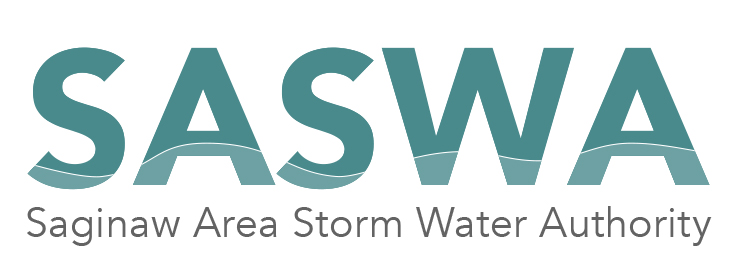Snowmelt Discharge into Natural Waters
A recent survey posted on the Saginaw Area Storm Water Authority’s (SASWA) website asked the question of where stormwater goes after it enters a storm drain or roadside ditch. Of the respondents, 62% correctly responded, which is directly to lakes and streams without treatment. On the other hand, the remaining respondents either didn’t know where the stormwater drained to, thought it made its way to a wastewater treatment plant, or believed it drained to lakes and streams but only after treatment.
Stormwater directly outlets to natural water courses such as streams, rivers, and lakes after it enters a storm drain or roadside ditch, because of that, it is especially important to keep our storm water systems clear of unwanted litter and contaminants. After it rains, as stormwater makes its way from the ground to a drain, it can pick up contaminants on its way. Oil and grease on driveways, fertilizer and pet waste on lawns, or trash and debris are all examples of unwanted discharges into storm water systems and waterways.
In the winter, when the snow melts and starts to travel to the storm drain, it can pick up road clearing materials like salt and sand. Salt and sand can have a serious impact on our waterways; salt can deplete the oxygen supply in water making an unsuitable environment for aquatic life and sand can clog the stormwater system creating flooding. However, there are simple practices to implement that can reduce the chances of salt and sand being discharged into streams, rivers, and lakes. It is a good idea to shovel snow onto the lawn to remove it from paved surfaces before applying deicing products, this will also make the deicing process more efficient. Shoveling snow onto the lawn also allows the snow to soak into the ground as it melts, reducing snowmelt runoff. Sweeping up residual salt or sand after the snow has melted is also a good way to prevent them from getting into nearby waterways. Also, the swept salt or sand can then be reused for future use. If improving water quality is considered while dealing with Michigan snow this winter and simple adjustments are made, improvements in streams, rivers, and lakes will occur.


